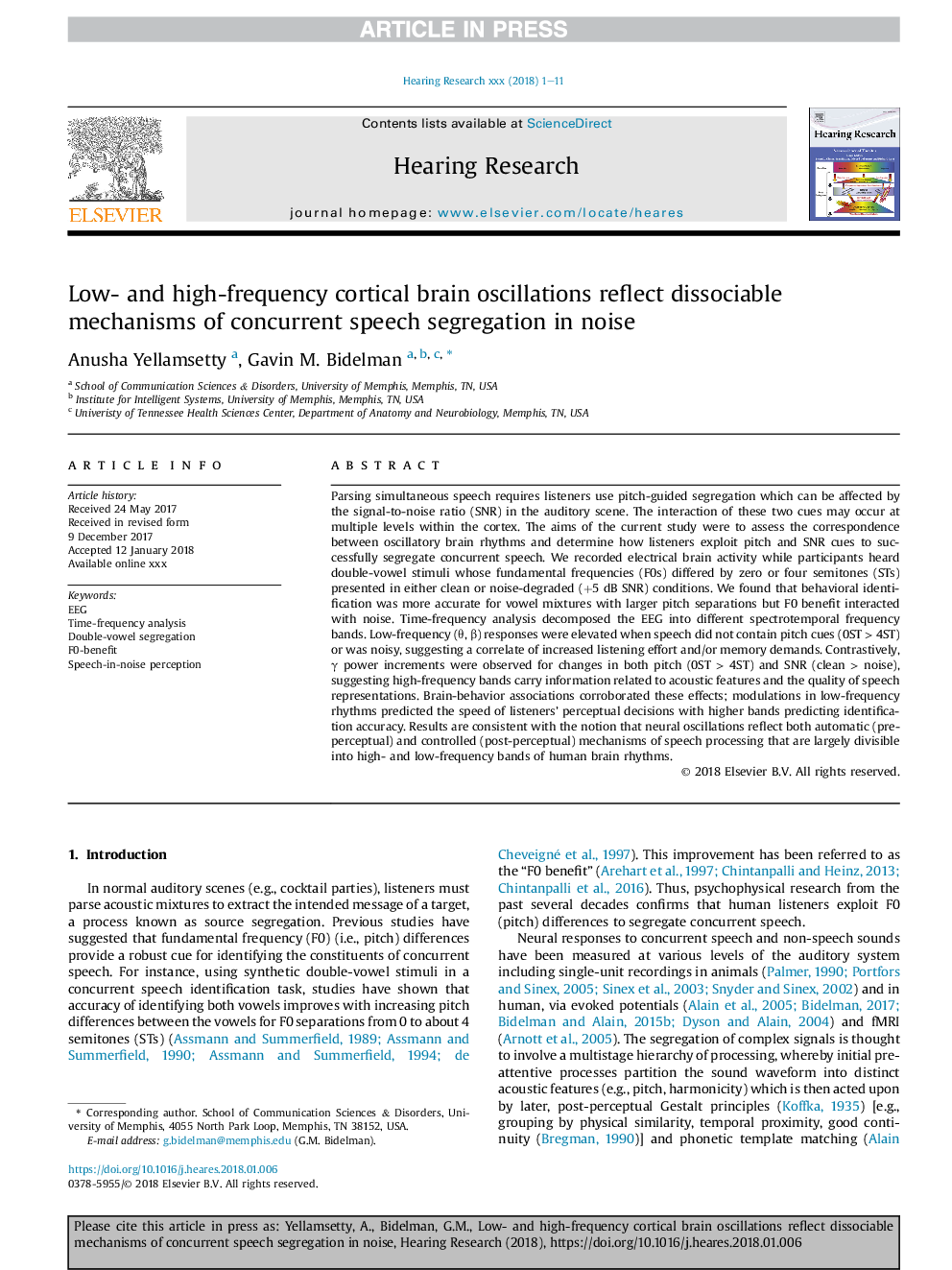| کد مقاله | کد نشریه | سال انتشار | مقاله انگلیسی | نسخه تمام متن |
|---|---|---|---|---|
| 8842392 | 1615539 | 2018 | 11 صفحه PDF | دانلود رایگان |
عنوان انگلیسی مقاله ISI
Low- and high-frequency cortical brain oscillations reflect dissociable mechanisms of concurrent speech segregation in noise
ترجمه فارسی عنوان
نوسانات مغزی در مغز کم و زیاد با توجه به مکانیزم های توزیع واکنش های گفتاری همزمان در نویز است
دانلود مقاله + سفارش ترجمه
دانلود مقاله ISI انگلیسی
رایگان برای ایرانیان
کلمات کلیدی
موضوعات مرتبط
علوم زیستی و بیوفناوری
علم عصب شناسی
سیستم های حسی
چکیده انگلیسی
Parsing simultaneous speech requires listeners use pitch-guided segregation which can be affected by the signal-to-noise ratio (SNR) in the auditory scene. The interaction of these two cues may occur at multiple levels within the cortex. The aims of the current study were to assess the correspondence between oscillatory brain rhythms and determine how listeners exploit pitch and SNR cues to successfully segregate concurrent speech. We recorded electrical brain activity while participants heard double-vowel stimuli whose fundamental frequencies (F0s) differed by zero or four semitones (STs) presented in either clean or noise-degraded (+5 dB SNR) conditions. We found that behavioral identification was more accurate for vowel mixtures with larger pitch separations but F0 benefit interacted with noise. Time-frequency analysis decomposed the EEG into different spectrotemporal frequency bands. Low-frequency (θ, β) responses were elevated when speech did not contain pitch cues (0ST > 4ST) or was noisy, suggesting a correlate of increased listening effort and/or memory demands. Contrastively, γ power increments were observed for changes in both pitch (0ST > 4ST) and SNR (clean > noise), suggesting high-frequency bands carry information related to acoustic features and the quality of speech representations. Brain-behavior associations corroborated these effects; modulations in low-frequency rhythms predicted the speed of listeners' perceptual decisions with higher bands predicting identification accuracy. Results are consistent with the notion that neural oscillations reflect both automatic (pre-perceptual) and controlled (post-perceptual) mechanisms of speech processing that are largely divisible into high- and low-frequency bands of human brain rhythms.
ناشر
Database: Elsevier - ScienceDirect (ساینس دایرکت)
Journal: Hearing Research - Volume 361, April 2018, Pages 92-102
Journal: Hearing Research - Volume 361, April 2018, Pages 92-102
نویسندگان
Anusha Yellamsetty, Gavin M. Bidelman,
